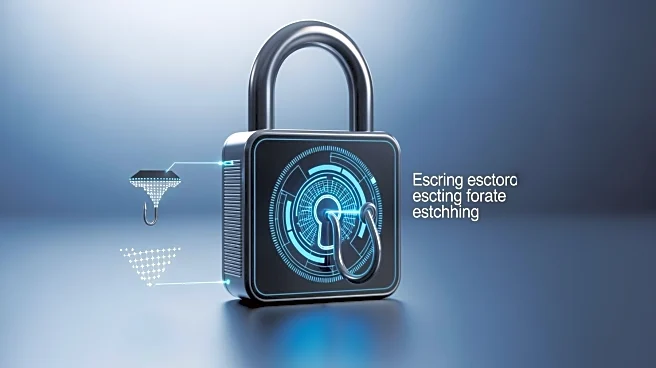What's Happening?
Healthcare organizations are increasingly vulnerable to sophisticated multi-vector cyber attacks, which involve simultaneous tactics such as phishing, DDoS, data exfiltration, and credential stuffing.
These attacks exploit multiple vulnerabilities at once, making them difficult to detect and remediate. Many healthcare providers still rely on siloed security tools, leading to chaos during complex attacks. Experts suggest that a centralized response platform, functioning as a single pane of glass, can enhance threat defense capabilities and streamline incident response processes. This platform should offer real-time views of cyber risk management and facilitate communication among response teams.
Why It's Important?
The rise of multi-vector attacks poses significant risks to the healthcare industry, which handles sensitive patient data and critical operations. A successful attack can lead to data breaches, financial losses, and compromised patient care. The need for a unified security approach is crucial to protect against these threats. By adopting centralized platforms, healthcare organizations can improve their ability to detect and respond to attacks, reducing the risk of data loss and operational disruption. This shift is essential for maintaining trust and ensuring the safety of patient information.
What's Next?
Healthcare organizations are expected to invest in advanced cybersecurity measures, including centralized response platforms and enhanced communication systems. As attackers become more sophisticated, leveraging AI tools and decoys, the industry must prioritize continuous monitoring and threat detection. Collaboration with security partners and ongoing staff training will be vital to staying ahead of emerging threats. The focus will be on developing comprehensive strategies that account for all potential attack vectors, ensuring a coordinated and effective response.
Beyond the Headlines
The ethical implications of cyber attacks on healthcare are profound, as they threaten patient privacy and safety. Organizations must balance the need for robust security with the ethical responsibility to protect patient data. Additionally, the legal landscape may evolve to impose stricter regulations on healthcare cybersecurity practices, prompting organizations to enhance their compliance efforts. Long-term, the industry may see a shift towards more integrated security solutions and partnerships to address the growing complexity of cyber threats.











